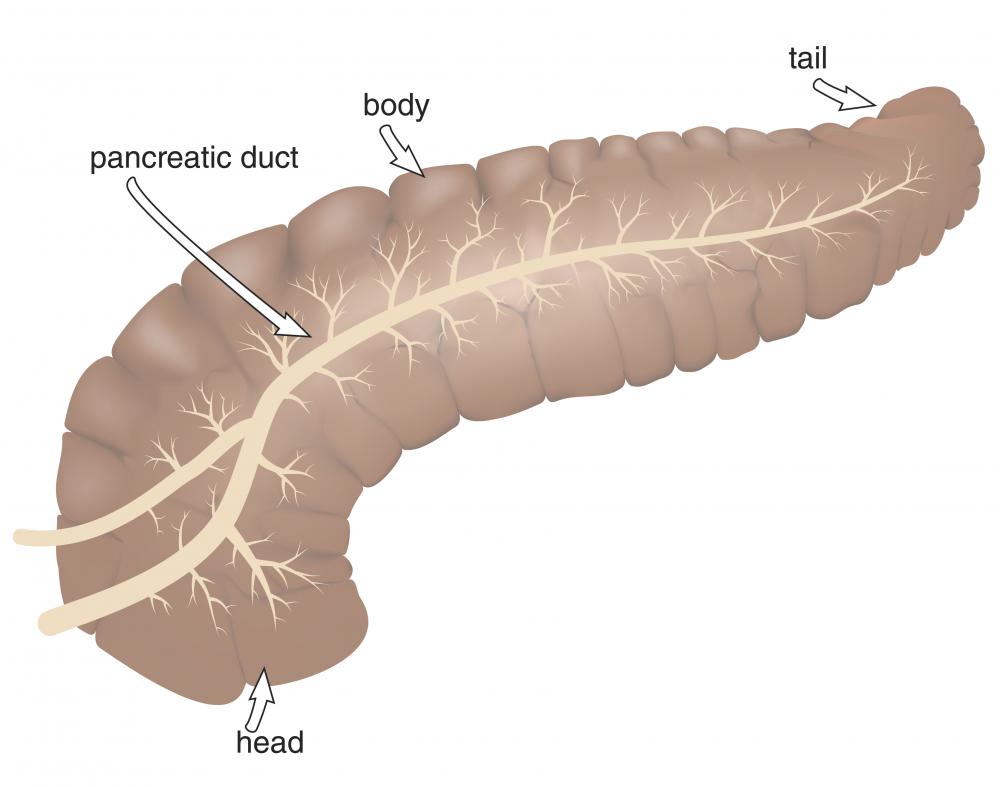At TheHealthBoard, we're committed to delivering accurate, trustworthy information. Our expert-authored content is rigorously fact-checked and sourced from credible authorities. Discover how we uphold the highest standards in providing you with reliable knowledge.
What is Alpha Amylase?
Alpha amylase is a protein involved in the digestion of food. This type of digestive enzyme cleaves large molecules of food into smaller pieces that can be taken up in the intestines and metabolized. In this case, the molecules are long chains of glucose known as starch. There are two types of this protein in humans, one in the pancreas and one in the saliva, also known as ptyalin.
A substantial amount of calories consumed by humans is taken up in the form of carbohydrates. One very common form of carbohydrate is the insoluble polysaccharide starch, which is found in foods such as potatoes, corn, and rice. It is comprised of a large number of sugars in a long chain. The sugar in starch is glucose. The structure of starch is a long, linear backbone of glucose molecules with chains of glucose branching off.

Alpha amylases are enzymes and, by definition, speed up the rate of reactions. In this case, the reaction is to cleave the linear part of the starch to produce large, soluble starch fragments. They continue being cleaved by this protein until they are broken down to a unit of two glucose molecules, known as maltose. In the intestine, maltose is broken down to glucose, which can be taken up by the cells. Once inside the cells, the glucose is known as blood sugar.

For this type of digestion to take place, it is first necessary to produce saliva. This is initiated by chewing, and alpha amylase is one of the components of it. The enzyme does not remain in the mouth for long. It is quickly swallowed along with the mass of food, known as a bolus.
Ptyalin continues degrading starch within the bolus, even after it has reached the stomach. Eventually, the enzyme itself is degraded by the acidic conditions of the stomach. This protein only degrades a small percentage of starch in the human diet. The pancreatic form degrades the majority of the starch.

Pancreatic alpha amylase cleaves the linkages of amylose. This compound is a linear form of starch that lacks the side branches. Its cleavage can result in several different products, including maltose and triple units of glucose, known as maltotriose.
Alpha amylase levels in the blood are sometimes measured to diagnose diseases. With mumps, for example, there is an increase in the level of ptyalin, because the glands that produce saliva are inflamed. Also, an increase in this protein in the pancreas can be a marker for pancreatitis.
Other organisms also produce alpha amylase. Fungi secrete large amounts of it. Plants produce the enzyme to use starch stored in seeds. Some bacteria also produce this protein.
AS FEATURED ON:
AS FEATURED ON:













Discuss this Article
Post your comments